Hiring the best talent for your brand or business is a challenge at the best of times. And finding the right person with the right skills and values has become a tricky and highly competitive business!
The market is simultaneously over-saturated and highly competitive. Every job posting gets dozens of applicants that take hours to sort through, and the majority aren’t ideal anyway. And, because everyone wants the best, the top talent has options, and they’re looking at more than salary and benefits when they make their decision.
So, how do you attract the right candidates? And how do you ensure that you stand out from the competition as a highly desirable employer?
The answer to these baffling questions is surprisingly simple—make use of HR marketing!
Just as you target and tailor your brand messaging and product development to appeal to your ideal buyers – HR Marketing does the same for your ideal employees.
So, what exactly is HR marketing? How does it differ from employer branding? And what are the best HR marketing strategies to use?
In this guide, we will cover everything you need to know about HR marketing – what it is, how it works alongside employer branding, the types of HR marketing, the best HR marketing strategies, and real-life examples.
Ready to learn about HR marketing to pull top talent like a pro?
Let’s jump in!
As time goes on, we are witnessing a drastic power shift when it comes to the workplace. It is no longer an employer-driven market. Instead, it is becoming a candidate-driven market, where job seekers hold more power than ever.
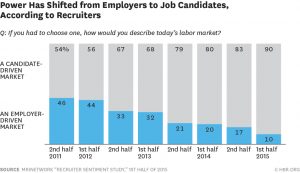
In order to adapt to this new way of doing things, a new form of marketing was created—HR marketing.
At its core, HR marketing is a company’s focused effort to attract the types of people they want to have working in their business – this includes;
Human resource marketing ties heavily into a business’s employer brand and should not be understated. As a negative company reputation can cost a business 10% more per hire, it’s important to ensure a good employer reputation.
Another important statistic you really should keep in mind is that according to Glassdoor, 75% of job seekers are more likely to apply for a position if an organization actively controls its employer brand.
Therefore, companies must actively affect the perceptions of potential employees. They can do this by using recruiting marketing strategies and materials tailored to their target audience. To do this, there are various HR marketing tools that a company can employ in order to become effective HR marketers.
Companies can use these strategies to attract active and passive applicants – and who doesn’t want to be able to do that? Further, they can excite them about working in the business. The ultimate aim is to enhance reach within the targeted demographic.
Summary: What is HR Marketing?
HR marketing is a company’s focused effort to attract qualified talent to their organization. They can do this through creating a positive employer brand, talent pools, job listings, and career pages.
HR marketing is when a company actively promotes a position in an attempt to attract skilled candidates. This involves creating job posts and resources for prospective employees. Moreover, it is usually temporary and does not create a lasting impression.
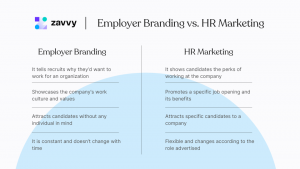
Anyone looking at working with your company will likely do some research about your business before applying.
This is where HR marketing and employer branding become two parts of a whole:
Employer branding is essentially a promise that a company makes to future employees. It sets the expectations for how they can anticipate being treated and the environment they’ll be working in. Much like any other form of branding, it combines various things to create an image, reputation and brand identity for your business as an employer.
You need to understand two components to create a good employer brand:
Your employer image is how employees view your company, positively or negatively. This is affected by anything from online forums discussing working at your company to social media and news.
You may not even be aware of your company’s employer image. Nevertheless, it affects how people think about working at your company. Therefore, it also affects the number and quality of your candidates.
Developing a positive and long-lasting employer image takes time and effort and is known as an employer brand.
Employer branding is the ongoing process of establishing a business’s unique status as an employer. Furthermore, an employer brand aims to create a good employer reputation. Through this strategy, a company is more appealing to future candidates.
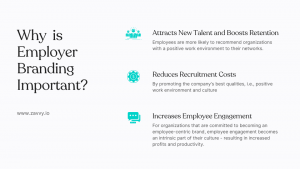
As competition for capable employees is growing ever more intense within each industry, it’s crucial to stand out against similar organizations. A powerful and distinct employer brand can significantly help with this.
Further, 86% of workers and job seekers read business evaluations and ratings before applying for a position. What’s more, companies that are actively investing in employer brands can reduce turnover by as much as 28%
To create a compelling employer brand, you need to know;
Summary: HR Marketing vs. Employer Branding
HR marketing is an umbrella term with multiple types of marketing falling under the categorization. Thus, you’ll have to understand the three different types of marketing if you want to effectively implement a marketing strategy and attract talent to your company.

Let’s go over each type of marketing and discuss the best ways to implement them.
Recruitment marketing is when a business advertises an open position within their company; intending to attract skilled and capable candidates to the position.
This type of marketing often consists of posting jobs on job search sites such as Glassdoor, LinkedIn, Upwork, or Indeed. Alternatively, you could promote the vacancy in a newspaper or buy a Facebook banner advertisement.
Further, recruitment marketing also consists of additional content geared towards anyone applying for a position at your company, including;
A talent pool is a database of qualified individuals that have had a touch point with your company in the past.
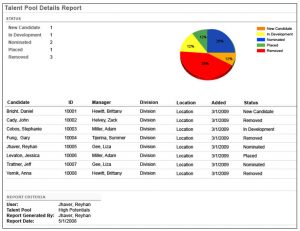
These individuals have usually already applied for a position at your company, but you did not have a role for them at the time. Or, contrastingly, they could be someone who approached you at an event or conference that you think would be a good fit for your organization. They could even be someone working for your competitors or stand-out talent you found on social media.
Your company’s career page will often form the first impression for someone looking to work with you. Therefore, it’s crucial to have it reflect what you want prospective candidates to think about your company.
It’s an opportunity to show candidates what they can expect if they decide to work with you. You need to have a clear and authentic employer brand on your career page, allowing anyone looking at your company to visualize a successful future working with you.
Summary: Types of HR Marketing
Below, we take a look at a few HR marketing plan samples which can help your company effectively begin attracting quality talent.
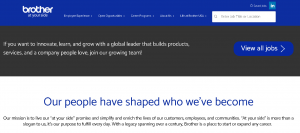
It is important to spend time and resources finding someone who aligns with your company’s goals and environment. Someone who has the necessary skills and work ethic to make hiring them worthwhile.
Once again, this ties into your employer brand. The brand you create across all platforms will help to filter out those candidates who will not be a good fit for your company. It will also help to draw in those people who you want working for you.
King, the development studio behind the Candy Crush Saga, is a great example of a company that has done this well. They have clearly stated values on their website, they help prospective candidates understand what the studio’s work environment is like.. Therefore, they are able to passively filter desirable candidates from those who will not be a good fit for the company.

Understanding what makes a good employee in any role is a massive advantage. Having the data behind you can make attracting the right people to your organization infinitely easier.
For example, Google started Project Oxygen in 2006 to understand what makes a good manager. They found eight essential qualities their best managers had and decided to train all other managers in these soft skills.
From there on out, Google knew exactly what they were looking for regarding managers and their HR members. From there, they could far more easily filter through applicants to find people that fit their company values and goals.

Social media is a useful tool when it comes to humanizing any brand, whether it be the company brand or the employer brand.
Using social media to connect with candidates on an emotional level is an invaluable tool. It can also be used to give applicants an idea of the environment they can expect to work in.
For example, Discord is a massive social media platform with largely untapped potential. Discord marketing can easily be used to grow your employer brand substantially.
An example of a company that is using social media to build its employer brand is Marriott careers. Storytelling is at the core of the content that they post. Most often, Marriott careers gives insights into what employees think and say about working there.
This is a powerful strategy and can help to attract qualified and skilled candidates to your company. Furthermore, it can excite them about working with you.
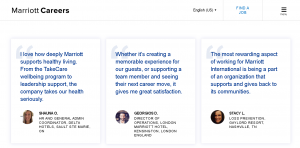
According to an Entrepreneur study, when employer brand content is posted on an employee’s social media account, it is shared twenty-five times more. In addition, it tends to gain eight times the engagement.
Salesforce is one of the largest companies in the world, with over 73,000 employees, 65,000 of whom are on LinkedIn. According to their numbers, they have more than 11,000 employees who participate in their ambassador employee program.
This is a prime example of how to encourage and reward employees for doing the promoting for you.
With all this in mind, investing in an HR marketing course or an employee advocacy course might be beneficial to help optimize your strategies.
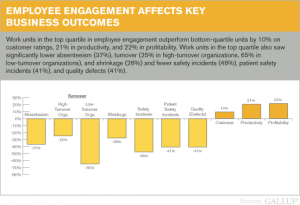
Summary: HR Marketing Strategies
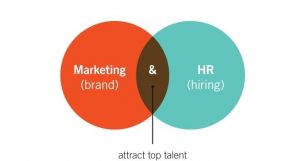
HR marketing is a company's focused effort to attract qualified talent to their organization. They can do this through employer branding, talent pools, recruitment marketing, job listings, career pages, and a positive candidate experience. Read the full guide to learn more about how HR marketing works and the best strategies to use for your business.
Employer branding is the ongoing process of establishing a business's unique status and positive reputation as an employer. Furthermore, an employer brand aims to create a good employer image. Through this strategy, a company is more appealing to future candidates and better retains current employees. Read the full guide for more on employer branding and HR marketing.
Yes, employer branding is creating an idea of what working for the company will look like, and HR marketing is trying to gain people's interest in a position. However, in order to be the most effective, these should work hand in hand to draw in new applicants and excite them at the idea of working with your company. Read the full guide to learn more about HR marketing and employer branding.
Glassdoor: 40+ Stats For Companies to Keep In Mind for 2021
Harvard Business Review: A Bad Reputation Costs a Company at Least 10% More Per Hire
Working Capital Review: What Google’s Project Oxygen Reveals about Good Managers
Entrepreneur: How to Create a Social Media Advocacy Program